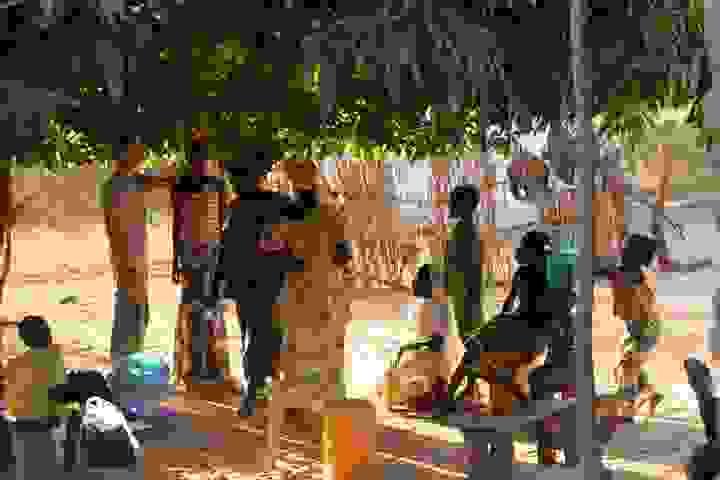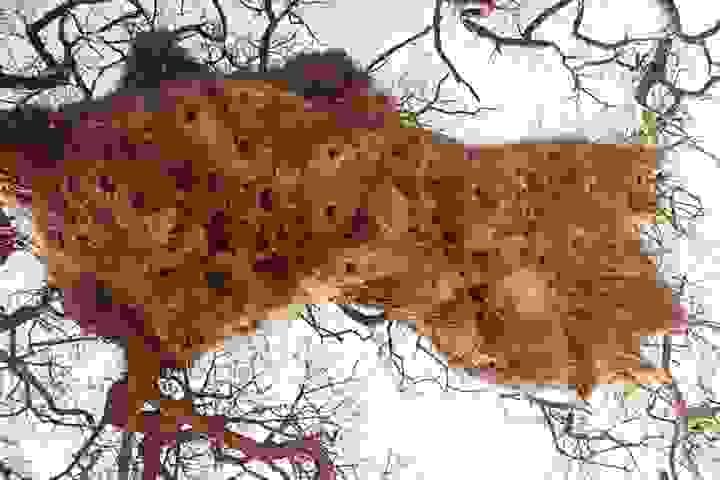
An interdisciplinary research approach
An interdisciplinary research approach
Arnaud Tognetti
Researcher
French National Center for Scientific Research - CNRS
Center for Environmental Economics, University of Montpellier

Overview
An interdisciplinary approach
My work focuses on the evolutionary and psychological mechanisms underlying human sociality. I expanded my initial approach based on behavioural ecology by developing research programs including approaches from behavioural economics and psychology. My research on cooperation has covered topics such as the influence of sexual selection on the evolution of cooperation, the existence of phenotypic cues of cooperativeness (facial, vocal or olfactory) and the role of hormones on cooperative behavior. I have also expanded the scope of my research to include cross-species comparison by testing the influence of cooperativeness on mate choice in two other social species, the mound-building mouse and sociable weavers. My new research project investigates our behavioural immunity, namely, whether humans, akin to other social species, use phenotypic cues of disease to detect infected conspecifics, and how their perception influences interpersonal decision-making.
I am currently a CNRS researcher sharing my time between the Center for Environmental Economics and the Evolutionary Anthropology team at the Institute for Evolutionary Sciences in Montpellier, and a research associate at the Karolinska Institutet (Stockholm, Sweden)
Models
I mainly study human behavior but I have also studied the mound building mouse & the sociable weavers.
I use different methods to measure behaviours ranging from economic games in humans to observations in the field or in captivity in other social species.

Humans
2009 - present
I work in three different populations: France, Sweden & Senegal. In these populations I mainly use an experimental approach from psychology and economics (e.g. public goods game, dictator game, Trust game).

Sociable weavers
2014 - 2018
This bird endemic to southern Africa is known for its massive nests built communally and for the existence of helpers who forgo their own reproduction to assist other birds with rearing offspring. I use helpers' allofeeding rate as a measure of cooperativeness.

Mound building mouse
2011-2014
This eastern European mouse exhibits an amazing cooperative behavior: in autumn groups of several mice build mounds by the accumulation of plant materials covered with earth. I used wild mice captured in Bulgaria and measured their investment in cooperative mound building in captivity.
Research Themes
My research projects revolve around two main topics
The Behavioural Immune System
Can we detect sickness in others?
Do cues of sickness in others trigger behavioral avoidance ?
Behavioral avoidance of sick conspecifics is the first, and probably most cost effective, line of defense against infection. Although avoidance behaviour of sick conspecifics has been well established in animal models, the influence of sickness cues on avoidance was poorly investigated so far in humans. My current projects attempt to fill this gap. We examine whether body odours, voice and facial traits could be used as early cues of sickness and whether and how their perception influence behavioural avoidance.
If you want to know more about it, you can listen to this webinar (in French though)
The evolution of cooperation
Does the presence of potential mates increase cooperativeness?
Are cooperative individuals preferred as mates?
In humans, my research shows that the presence of a woman (i) increases cooperativeness of both French and Senegalese men, (ii) most likely by triggering their competitiveness to be the most cooperative man in the group (competitive helping) and (iii) that cooperation is a mate choice criterion. In order to understand how the presence of women increases cooperativeness in men, I examined the role of sexual hormones as a potential proximate mechanism. Despite growing evidence supporting the hypothesis that human cooperation is sexually selected, few empirical studies has been conducted in other social species. I first tested this hypothesis in the mound-building mouse. In this species, females seem to prefer the most cooperative males (i.e. males who invest more in mound building). In the sociable weaver, we investigated whether helpers increase their cooperativeness (i.e. allofeeding behavior) when potential mates are around using play-back experiments simulating the presence of females or males in the colony.
Publications
Frasnelli J/Tognetti A, Winter AL, Thunell E, Olsson MJ, et al. (2024) High prevalence of long-term olfactory disorders in healthcare workers after COVID-19: A case-control study. PLOS ONE 19(7): e0306290. https://doi.org/10.1371/journal.pone.0306290
Menger NS, Tognetti A, Farruggia MC, Mucignat C, Bhutani S, Cooper KW, Rohlfs Domínguez P, Heinbockel T, Shields VDC, D'Errico A, Pereda-Loth V, Pierron D, Koyama S, Croijmans I. (2024). Giving a Voice to Patients With Smell Disorders Associated With COVID-19: Cross-Sectional Longitudinal Analysis Using Natural Language Processing of Self-Reports. JMIR Public Health Surveill;10:e47064.
L.S. Hansson, A. Tognetti, P. Sigurjónsson, E. Brück, K. Wåhlén, K. Jensen, M.J. Olsson, R. Toll John, D.B. Wilhelms, M. Lekander, J. Lasselin. (2024). Perception of unfamiliar caregivers during sickness – Using the new Caregiver Perception Task (CgPT) during experimental endotoxemia. Brain, Behavior, and Immunity, 119, 741-749.
Andreasson, A./Tognetti, A., Jones, M., Lekander, M., & Lasselin, J. (2023). Assessing sickness behavior in the French: Validation of the French translation of the sickness questionnaire (SicknessQ) in a non-clinical French population. Brain, Behavior, & Immunity-Health, 34, 100708.
Tognetti, A., Saluja, S., Lybert, N., Lasselin, L., Tamm, S. et al. Olfactory Cues of Naturally Occurring Systemic Inflammation: A Pilot Study of Seasonal Allergy. Neuroimmunomodulation (2023); 30 (1): 338–345.
Tognetti, A., Thunell, E., Zakrzewska, M., Olofsson, J., Lekander M., Axelsson J., & Olsson, M. J. Discriminating between sick and healthy faces based on early sickness cues: an exploratory analysis of sex differences. (2023). Evolution, Medicine, and Public Health, 11: 386–396.
Tognetti, A., Williams, M. N., Lybert, N., Lekander, M., Axelsson, J., & Olsson, M. J. Humans can detect axillary odor cues of an acute respiratory infection in others. (2023). Evolution, Medicine, and Public Health, 11: 219–228.
Hansson, L. S., Lasselin, J., Tognetti, A., Axelsson, J., Olsson, M. J., Sundelin, T., & Lekander, M. The walking sick: Perception of experimental sickness from biological motion. (2023). Brain, Behavior, and Immunity, 113: 319-327. doi:10.1016/j.bbi.2023.07.020
Bränström, R. & Tognetti, A. Comment l'évolution de l'opinion publique et des réformes législatives des dix dernières années influence la satisfaction de vie des minorités sexuelles vivant en France, en Suède et en Pologne ? (2023). Santé Publique, 34(HS2), 169-178. doi: 10.3917/spub.hs2.0169
Juran, S., Tognetti, A., Lundström, J., Kumar, L., Stevenson, R., Lekander, M., Olsson, M.J. Disgusting odors trigger the oral immune system. (2023). Evolution, Medecine, and Public Health. 11, 8–17, https://doi.org/10.1093/emph/eoac042
Bovet, J., Tognetti, A. & Pollet, T. Methodological issues when using face prototypes: A case study on the Faceaurus dataset. (2022). Evolutionary Human Sciences, 4, E48. doi:10.1017/ehs.2022.25
Tognetti, A., Durand, V., Dubois, D., Barkat-Defradas, M., Hopfensitz, A., & Ferdenzi, C. The smell of cooperativeness: Do human body odours advertise cooperative behaviours? (2022). British Journal of Psychology, 113, 531–546. doi:10.1111/bjop.12544
Ohla K., Veldhuizen, M. G., Green, T., Hannum, M.E., Bakke, A.J., Moein, S., Tognetti, A., et al. (2022). Increasing incidence of parosmia and phantosmia in patients recovering from COVID-19 smell loss. Rhinology. doi:10.4193/Rhin21.415.
Covas, R., Lardy S., Rey, B., Silva, L., Theron, F., Ferreira, A., Tognetti, A., Faivre, B. & Doutrelant, C. The oxydative cost of helping and its minimization in a cooperative breeder. (2022). Behavioral Ecology, 33, 504-517. doi:https://doi.org/10.1093/beheco/arab152.
Tognetti, A., Doat, D., Dubois, D. & Romaniuc, R. (2021). The effect of physical disability on group cooperation: Experimental evidence. Bull Econ Res. 2021;1−9. https://doi.org/10.1111/boer.12290
Tognetti, A., Sarolidou, G., Lasselin, J., Lekander, M., Olsson, M.J & Lundström, J.N. (2021). Acute systemic experimental inflammation does not reduce olfactory performance. Chemical Senses. https://doi.org/10.109
Sarolidou, G., Tognetti, A., Lasselin, J., Regenbogen, C., Lundström, J. N., Kimball, B., ... & Olsson, M. J. (2020). Olfactory Communication of Sickness Cues in Respiratory Infection. Frontiers in Psychology, 11, 1004.
Tognetti, A./Suire, A., Durand, V., Raymond M. & Barkat-Defradas, M. 2020. Speech Acoustic Features: A Comparison of Gay Men, Heterosexual Men, and Heterosexual Women – Archives of Sexual Behavior, 49(7): 2575-2583. https://doi.org/10.1007/s10508-020-01665-3
Tognetti, A., Durand, V., Barkat-Defradas, M. & Hopfensitz, A. 2020. Does he sound cooperative? Acoustic correlates of cooperativeness. British Journal of Psychology, 111: 823-839. https://doi.org/10.1111/bjop.12437
Tognetti, A., Raymond, M., Ganem, G. & Faurie, C. 2018. Female mound-building mice prefer males that invest more in building behavior, even when this behavior is not observed –Behavioral Ecology and Sociobiology, 72:155.
Tognetti, A., Faurie, C., Yamagata-Nakashima, N. & Oda, R. 2018. Are non-verbal cues of altruism cross-culturally readable? Personality and Individual Differences, 127: 139-143.
Tognetti, A., Dubois, D., Faurie, C. & Willinger, M. 2016. Men increase contributions to a public good when under sexual competition. Scientific Reports,6:29819
Tognetti, A., Berticat, C., Raymond, M. & Faurie, C. 2014. Assortative mating based on cooperativeness and generosity. Journal of Evolutionary Biology 27(5):975-81.
Tognetti, A., Berticat, C., Raymond, M. & Faurie, C. 2013. Is cooperativeness readable in static facial features? An inter-cultural approach. Evolution and Human Behaviour 34: 427-432.
Tognetti, A., Berticat, C., Raymond, M. & Faurie, C. 2012. Sexual selection of human cooperative behaviour: an experimental study in rural Senegal. PLoS ONE 7(9): e44403.
To know more
To read more about my collaborations and projects, please follow the links below
My current work - Webinar (in French)
Invited speaker - GDRO3
Titre: Identification précoce des indices de maladie via les sens

GDR - CNRS
Co-fondateur et membre du bureau du réseau RESHAPE (Réseau d’Etude de la Santé Humaine par des APproches Evolutives et historiques), né au début de l'année 2022, vise à mettre en relation les chercheurs et équipes travaillant sur la santé humaine avec une perspective historique et évolutionniste, notamment au travers de l'organisation de rencontres scientifiques.
Karolinska Institutet
The overarching goal of our research is to determine the neural and behavioral function of the olfactory system, and how it interacts with the other senses to interpret our environment in health and disease. To this end, several different lines of ongoing research explore various aspects of these questions using a wide range of experimental methods, including psychophysical and behavioral tests, functional brain imaging (fMRI and EEG/ERP), structural brain imaging, and psychophysiological measures
Our research is at the intersection of evolutionary biology, ecology and the social sciences. We aim to improve our understanding of behaviour and health in humans and non-human primates. Our group is based at the Montpellier Institute for Evolutionary Sciences (ISEM).
Researchers, faculty and doctoral students at CEEM study individual and group behaviour in various economic environments. Our research team relies strongly on laboratory experimentation to carry out those projects.
With Rita Covas (CIBIO & FitzPatrick Insitute) & Claire Doutrelant (CEFE-CNRS)
The sociable weaver research program uses an individually marked population of sociable weavers to study the evolutionary bases of cooperative behaviour and the rules that allow cooperation to persist.
Sociable Weavers Project on TV
Follow the team of the Sociable Weavers Research Project on youtube!
My collaborators
by theme
Cooperation in non-humans
Cues of cooperation
Behavioural Immunity
Contact me!
© 2017










